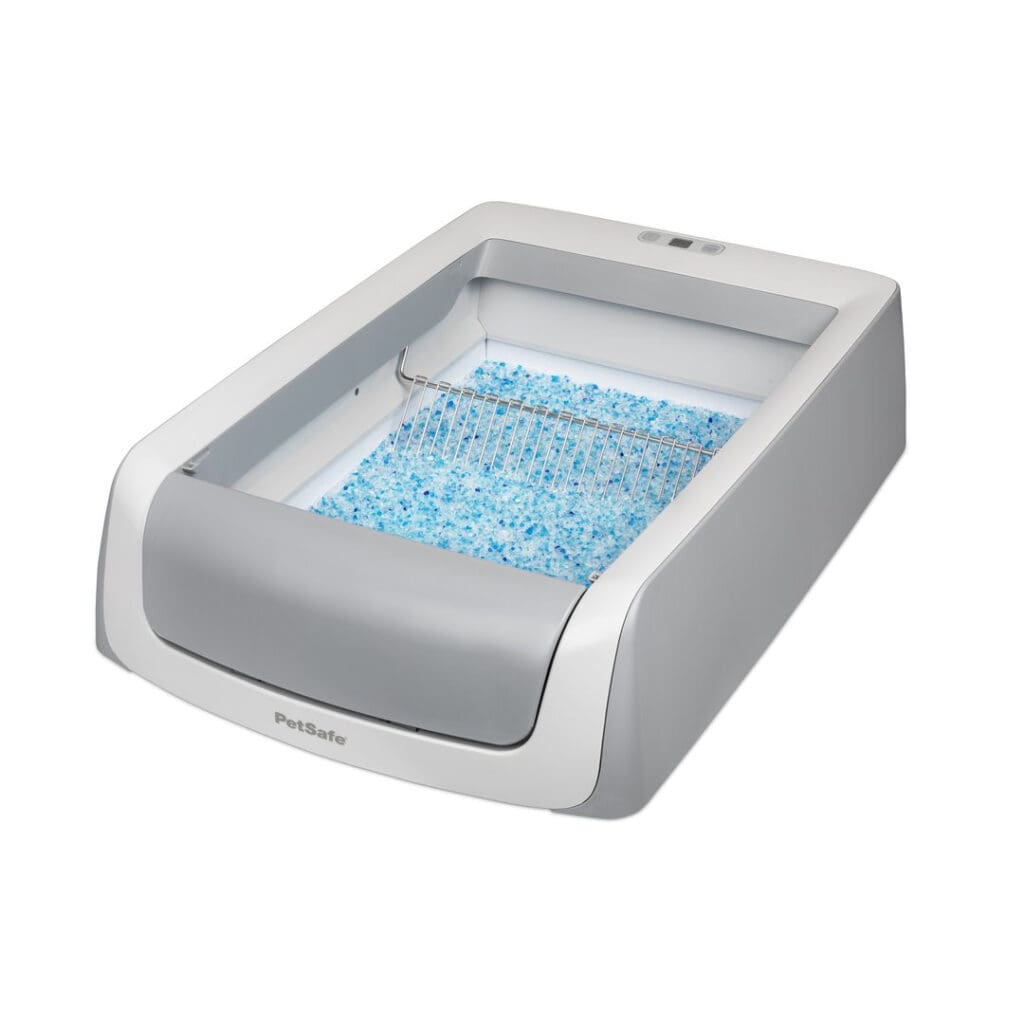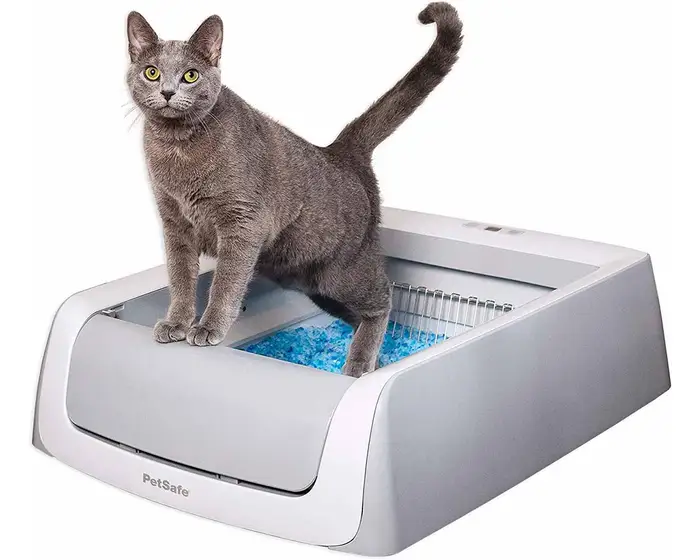We speak with Sydney-based celebrity vet Dr Katrina Warren on of the reasons cats get surrendered. Hint: It’s their litter box.
According to Dr Katrina, one of the main reason cats are surrendered to animal shelters, is because of their litter box, and humans being unable to cope with indoor cats and their commitment to cleaning their litter. Which is a sad fact.
The unwanted smell normally associated with a full litter box after an owner has been out of their home all day, can be a huge turn off for some owners. Simply put, people just don’t want to deal with it.
Related Story: How to Care for Your Pet Post-Pandemic
“Litter box issues are no reason at all to surrender a cat from your home”, Dr Katrina says.
There are multiple reasons why a cat litter might smell. From a litter which is full to a possible underlining medical issue. Either way, it’s not the cat’s fault if the litter smells.
“If a cat is going to the toilet outside their litter box, make sure you rule out any medical conditions first. A bladder infection, for example, could be the cause of a cat toileting away from their box. You should always book an appointment with your vet to have your cat checked out just in case there is something wrong.
If your vet gives the all-clear on a bladder infection, then it is likely an issue with the cat’s happiness around the litter”, Dr Katrina explains.
is this her talking here? “Many people choose to let their cat roam outdoors both day and night, with accessible entrance into their home using cat doors and hatches. This eliminates the need to use litter, as the cat will generally do their business outdoors instead.
However, letting cats outside can put their health at risk as they may contract diseases from stray cats or worse, get hit by a car. Keeping them indoors, especially at night means your furry baby will live longer. According to the Cat Protection Society of NSW, indoor cats live an estimated ten years longer than cats with continued outdoor access.
So, convincing your cat to use their litter box is likely to lead to better outcomes for the whole family, including your cat.
And if the issue of bad smells is due to the litter filling up too much throughout the day when no one is home, Dr Katrina recommends investing in the PetSafe’s ScoopFree Second Generation Self-Cleaning Litter Box, which is great for eliminating odours and removes the need to clean the tray as often.
PetSafe’s new ScoopFree Second Generation Self-Cleaning Litter Box, is available with an optional privacy hood with side entry and takes all the hassle out of your cat’s toilet habits.
It’s easy to use. You simply place the scoop free device on top of the cardboard box which comes with the device, fill it with the crystal litter which also comes with the device, and after every use by your cat, the device will automatically activate using a grate which scrapes along the litter, collecting any toilet business and scooping it under a little flap, and then into a secure little box, closing it and preventing any smells from escaping.
The hands-free cleaning cycle runs twenty minutes after your cat leaves her litter box and has a safety sensor to stop the rake whilst your cat uses the litter.
It has five times better (the) odour control than traditional clumping clay litter, AND is 99 percent dust free. So less mess around the litter. And the crystals absorb the liquid waste and dehydrates the solid waste in minutes.
The scoop free litter device by PetSafe may not be an option for you.
BB Writer Rebecca tried the new PetSafe scoop free litter box, here’s what she says:
“I tried this incredible device with my four-year-old cat, and he didn’t want anything to do with it. As the saying goes, you can’t teach an old dog new tricks. Or in this case an old cat. He walks in it and then walks right out of it. As recommended by Dr Katrina, I left his old cat litter out, so he had options to go to the toilet. Though he is intrigued by the concept of the automated rake which sweeps through the crystal litter, he still has no interest in using it.
However, I have recently adopted three beautiful kittens and they absolutely love it. They are especially fascinated when the rake of the device activates to clean the litter. It’s the cutest thing to see the three of them sitting next to the litter watching the rake go back and forth.
I am up to 35 cycles of the rake scooping the litter for the kittens, and so far no smell, which is a huge success as the cats are indoors most of the time”.

To help you establish a better relationship with your cat’s toilet habits, Dr Katrina shares her priority checklist on what to look out for so you can work out what’s wrong with your four-legged fur baby.
- Cleanliness: Many elimination problems result from a litter tray not being sufficiently pristine for your cat’s highly refined sense of smell. Try using less litter in the tray and discard it daily, washing out the tray every time and replacing the litter.
- Type of litter: Yes, some cats have a favourite type of litter, so if you’re changing to something new, do it gradually. You need to offer both and slowly phase out the previous litter to make sure it doesn’t cause upsets. You may also need to experiment with different types of litter until you find the one your cat likes best. It’s often easier to train a kitten to use a certain type from the start.
- Type of litter box: Some cats don’t like the enclosed hooded tray types of litter boxes. Some cats like big trays, whilst others like small trays. Like humans, cats are all incredibly individual. Offer your cat a couple of different options to see what he or she feels most comfortable with and then go with that.
- Privacy: Would you want someone watching you on the toilet? Not likely – and your feline friend is no different. Cats like privacy when they do their business. Place the tray in a nice quiet spot away from the cat’s eating area. Cats absolutely don’t like to eat where they go to the toilet, so they need to be in different locations.
- Multi-cat homes: Cats don’t like to share their toilet, so if you have more than one furry friend, provide one tray per cat – plus a spare just in case one gets full, and they need a fresh litter to go to throughout the day.
- Stress: Toileting problems are often a sign of stress. Moving house, the arrival of a new baby or additional pet. Anything that causes upheaval in the daily routine can stress your cat out. Try to give them a calm and consistent environment, and perhaps even a dedicated quiet room to chill out in.





